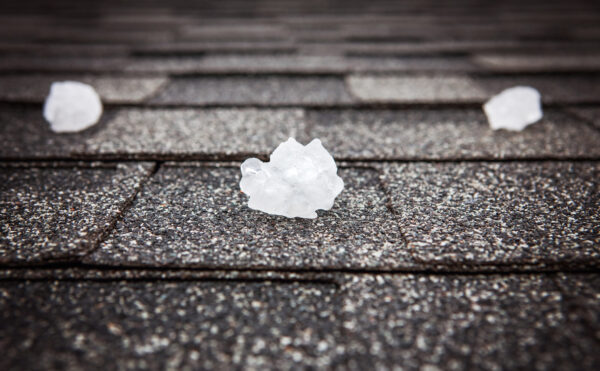
What is Class 4 Impact Resistance for Roofing Shingles?
Homeowners who live in hail-prone areas are typically concerned with impact resistance because it can often determine whether or not a roof will need to be replaced following a storm.All roofing products go through rigorous testing by independent, nationally recognized laboratories to provide assurance that product performance meets specifications. Impact resistance for roof coverings are rated by Underwriter Laboratories (UL) between Class 1 and 4, with Class 4 being the most durable.
How Impact Resistance for Roofing Shingles Is Measured
To measure the impact resistance of roofing shingles, UL performs its UL 2218 test within a controlled environment. Results provide impact resistance data for the evaluation of prepared steep slope roofing materials like shingles.
During a Class 4 impact resistance test on asphalt shingles, a 2-inch diameter steel ball is dropped from 20 feet above a shingle to simulate the impact of hail. This is done twice in roughly the same spot. A shingle passes the test if the backside does not show any visible evidence of tearing, fracturing, cracking, splitting or other opening of the roof-covering layer.
According to UL, the 2218 test does not “evaluate the effect of weathering, temperature, aging or similar effects on the impact resistance of prepared roof covering materials. These and other factors, including time, roof slope, roof system configuration and application influence the performance of roofing materials in the field.”
What Does Class 4 Impact Resistant Roofing Shingles Mean for Homeowners?
Severe weather events can produce hail and cause long-term problems to a roof. Homeowners in hail–prone areas can reduce the risk of impact damage to their home by installing Class 4 shingles. Insurance companies will only approve a claim filed after a storm, so whenever hail strikes the local area, it is best to determine if your roof has been damaged as soon as possible. Many insurance companies offer a discount for homes with Class 4 shingles.
What Hail Does to a Roof
Like many other weather events, hail means different things to homeowners depending on where they live. Some parts of the country in mountainous regions might see hail drop in the form of very small ice pellets, whereas Midwest plains states might see hail closer to the size of pebbles or even golf balls. Unfortunately, in both cases, most hail damage to roofing shingles is subtle or unnoticeable at first but shows excess damage over time.
When hail hits an asphalt shingle roof, three things happen:
- It breaks or cracks the shingle and exposes it to additional damage.
- It damages the asphalt.
- It loosens the granules embedded on top of the shingle for protection.
With granules gone and the asphalt damaged, shingles are vulnerable to additional damage from the sun’s ultraviolet (UV) rays. The damage might not be obvious after the storm, but your roof may eventually need replacement.
Signs of Hail Damage
Hailstorms are local. A storm might be widespread, but hail fall can be local. Before you call a roofing contractor, you want to be reasonably sure if hail has hit your home.
To begin the process, you should start with a look at your yard and around the neighborhood. If you see fallen tree limbs, dented cars, and damage to siding or garage doors, you may have a roofing problem.
It’s important to understand that granules loosened by a storm may not wash away for some time. Often it takes a rainstorm to wash them away. So, if you don’t see any evidence of hail strikes when you first check, you’ll want to look again after the next storm because the damaged and deteriorating shingles can shed large amounts of granules which collect in your rain gutters. After a storm, if you find granules in your gutters or on the ground under downspouts, it is time to call a trusted roofing contractor to inspect your roof.
Getting an Inspection
Once you have done your own visual inspection it’s in your best interest to have the roof inspected by a qualified, local roofing contractor before you call your insurance company. Look for a Malarkey Certified Residential Contractor in your area. These trusted professionals can help you figure out just how bad the damage is and walk you through the insurance claim and replacement process.
Roofing contractors will inspect a roof in the same way as an insurance agent. They check a roof by dividing it into sections and counting the number of strikes per section to determine whether the roof requires replacement. Your roofing contractor may also want to be present during the insurance inspection to support your case for roof replacement.
Impact Resistant Shingles Protect Your Roof
Hail can seriously compromise the integrity of a roof and allow water to infiltrate the home. Leaks can lead to mold, mildew, and other damage that could require expensive repairs down the road. Care and attention to your roof will help ensure it stays in great shape for years to come. Considering roof shingles rated Class 3 or Class 4 can greatly reduce the risk of damage to your home during extreme weather events like hailstorms.


